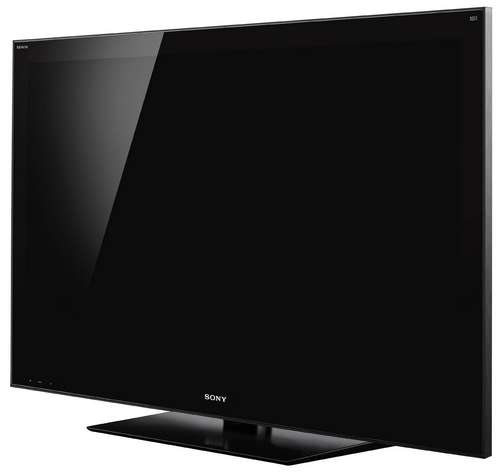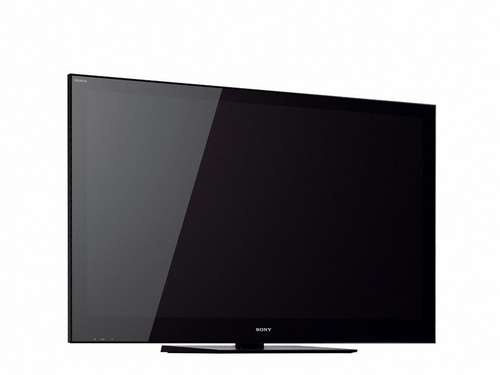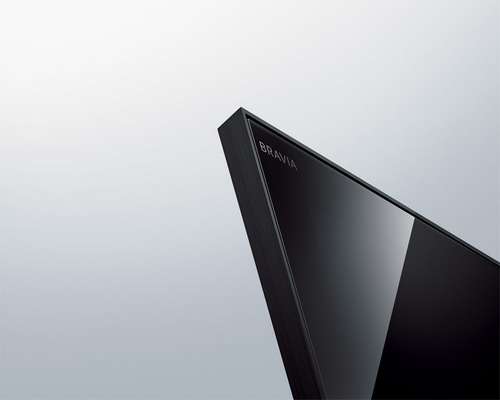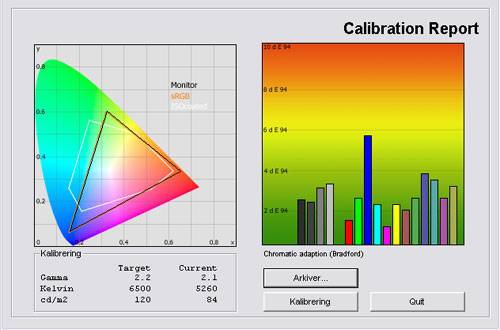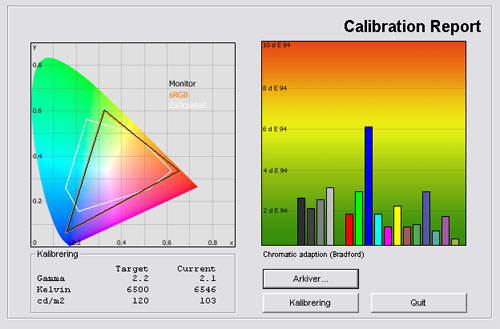Review: Sony HX909 / HX900
Sony HX909 / HX900 review
Sony’s most expensive model is currently the HX909 (in the US) / HX900 (in EU) and it comes with LED local dimming, 3D, Internet features and Sony’s Monolithic design. In this review we will examine Sony’s most expensive TV.
We have already tested TVs with LED local dimming. Can Sony’s HX range compare or beat these models? Have Sony managed to improve black levels with their local dimming system? And what about the 3D picture quality? FlatpanelsHD will find out in this review.
Sony HX909 is the US model that is available in 46 and 52 inches called XBR-46HX909 and XBR-52HX909. Sony HX900 is the EU model that is available in 40, 46 and 55 inches called 40HX900, 46HX900 and 52HX900. In the UK it’s called HX903.
Subscribe to our Newsletter to receive e-mails when new reviews are online. We’ll soon publish our Samsung C9000, Fujitsu P27T-5 and Toshiba WX800/WL768 reviews as well.
Panel size: 52" widescreen (LCD) Resolution: 1920x1080 Response time: - Contrast ratio: - Brightness: - Colour support: 16,7 million colors Signal processing: 8 for each color Viewing angles (H/V): 178/178 Dot pitch: - Panel type: LCD with backlit LED Wall mounting: Swivel stand: Dimensions (HxBxD): 80.7cm x 126.3cm x 6.7cm (without stand) Weight 42.9 kg Built-in speakers: Input formats: 480p/i, 576p/i, 720p, 1080i & 1080p (50, 60 & 24p) Inputs • VGA • DVI (can be converted through HDMI)
• Audio (type) (Audio in/out)
• SCART (1 input)
• S-video • Composite • Component 
• HDMI (4 inputs, 1 ARC)
• Other Udgange • Audio (type) (1 output)
• SCART • S/PDIF (optical)
Tuners • Analog • DVB-T • DVB-T (MPEG4) • DVB-C • DVB-C (MPEG4) • DVB-S • DVB-S (MPEG4) • Other Price and retailer:
| US retailer | UK retailer |
 |  |
Our first impressions
Sony HX909 is a member of the Monolithic design line. This means that the front glass is made from one piece of glass to create a seamless and beautiful design.The stand is rectangular and made in the same glossy black color. It has a manual swivel function, too.
The TV is not very slim but we also have to remember that it incorporates a full LED backlight with LEDs behind the LCD panel.
Inputs and outputs are located on the side and on the back.
Two HDMI, one USB and a few analogue inputs point towards the side but the rest of the inputs point out towards the wall, which is not a very clever choice by Sony.
Test tools
Our TV signal is DVB-S (satellite) from Canal Digital and DVB-T (terrestrial). We also have an analogue TV connection. Testing is done with the DVE (digital video essentials) and Peter Finzel test DVD. Testing is also done with DVD, TV, Blu-Ray and Media center/PC.We use our own monitorTest. The software supports some of the traditional test patterns used to evaluate displays as well as some new and unique test patterns developed by the people here on FlatpanelsHD.
Sony PlayStation 3 is our Blu-Ray player.
All contrast measurements are based on the ANSI methodology.
Functionality
Below you see the remote control. It’s the same as the one included with other semi high-end and high-end Sony TVs from 2010 and 2011.Sony’s HX range naturally also has all of Sony’s advanced multimedia functionality, such as Bravia Internet TV, DLNA, USB and more. We have already looked at these features in previous reviews and the functionality on HX909/HX900 is almost identical. Therefore we suggest you read our Sony NX700 review for full details.
Calibration settings
In the picture settings menu you can adjust the following: Backlight, contrast, brightness, color, hue, color temperature, sharpness, noise reduction, MPEG noise reduction, Motionflow and film mode.
You can select from these picture presets: Standard, Vivid, Personal and Theatre (orange button on remote control).
If you go to the advanced menu you can also adjust Black corrector, Adv. contrast enhancer, gamma, auto light limiter, LED Dynamic Control, clear white, live color, and the White Balance with RGB gain and RGB bias. Lastly, Sony has integrated a Detail Enhance, Edge Enhancer and Skin Naturalizer.
Energy consumption
Below I have measured energy consumption on the 52-inch version of the TV. |  | |
| Standby | 0.0 W | 0.0 W |
| SD+HD | 103 W | 87.5 W |
| 3D | 115 W | 115 W |
After calibration I measured energy consumption to 87.5 W which is very impressive for a 52-inch TV. Most 50-inch plasma TVs such as Panasonic VT20/VT25 consumes W after calibration.
I have also included a 3D energy consumption. In the 3D mode the backlight is often maxed out to compensate for the reduction in light from the 3D glasses. Therefore the 3D mode also typically consumes more energy.
Also, please note that the flat panel TVs uses less power after calibration. This is common on flat panel displays because many picture parameters are reduced during calibration.
Calibration on Sony HX909/HX900
Below you can see an out-of-box measurement in the Standard picture settings without the Eco mode enabled.The graph says this:
The number on the left is the delta value. Delta is a difference between two factors; here it’s the difference between the measured color on the panel and the actual color that is our target.
The out of box picture quality is no very convincing. The standard picture preset has oversaturated colors (see the graph above) and added artificial sharpness that makes picture look too digitalized.
Gamma is rising from 1.63 in the bright colors to 2.35 in the dark colors, which means that the bright colors are too bright and oversaturated and the dark colors are too dark, crushing details in dark movies and games. We aim for 2.2 gamma
Brightness is not very high, however, and was only measured to 112 cd/m2. Sony HX909 has a backlight slider in the menus so you can increase backlight on the panel if you prefer.
The color temperature is close to our 6500 Kelvin target. This means that colors are natural and not too warm or cold.
I now changed to the Theatre mode with the orange button on the remote control.
The Theatre mode on Sony’s HX range is not a THX mode but it’s much more accurate than the Standard picture preset. Gamma is still not perfect and was measured to 1.9 rising to 2.2.
The color deviations are fairly low but the color temperature is too low, resulting in slightly too reddish pictures.
I wanted to improve picture quality further and did a calibration. See my result below.
After calibration I managed to get a good result. Gamma is not 100 % perfect and rises from 2.0 to 2.21. This means that the bright colors are slightly too bright.
The color deviations are lowered significantly and the color temperature is now very close to our 6500 Kelvin target. Brightness is close to 120 cd/m2 which is optimized for viewing in dark room.
Below are my calibrated settings.
| After calibration | |
| Picture mode: | Cinema/Theatre |
| Backlight | 7 |
| Contrast | 85 |
| Brightness: | 50 |
| Colour: | 50 |
| Hue: | 0 |
| Sharpness: | 0 |
| Colour temperature | Warm2 |
| Noise reduction | Off |
| Mpeg noise reduction | Off |
| Motionflow | Clear Plus |
| Film-mode | Auto 1/Auto 2 |
| Black corrector | Off |
| Adv. Contrast Enhancer | Off |
| Gamma | -1 |
| LED Dynamic Control | Standard |
| Auto Light Limiter | Off |
| Clear White | Off |
| Live Colour | Off |
| Detail/Edge/ enha. | Off |
| R Gain | -10 |
| G Gain | -9 |
| B Gain | 0 |
| R Bias | -2 |
| G Bias | -1 |
| B Bias | +1 |
I changed the backlight value, lowered gamma and deactivated most of the dynamic circuits. I also changed the RGB setting options to reach better color accuracy.
If you’re primarily watching TV in the daytime you should increase the settings called backlight or activate the light sensor. Please notice that the Cinema/Theatre setting is activated with the orange button on the remote – not in the actual picture settings menu.
Picture quality on Sony HX909/HX900
In this section I go through picture quality with the calibrated settings.Sony’s HX models come with glossy front because of the Monolithic glass design. Sony has applied an anti-reflective coating but we still reflections from windows and lamps in the room. See the picture below taken in a dark room with ceiling lights turned on.
I went on to examine color gradation. We measured color accuracy in the calibration section but color gradation is equally important as it tells us how well a screen distinguishes the many different colors shades.
Color gradation on Sony HX909 is good but not perfect. In the darker areas of our test color gradients we saw some “bands”, indicating that not all colors are perfectly distinguished. These are very minor problems and overall I feel that HX909 did a great job here.
The SD picture quality is fairly good. We experienced a high level of detailing and SD picture quality was definitely better than Sony’s mid-range TVs. However, I still feel that Panasonic’s plasma TVs has better SD detailing based on the very good de-interlacing and scaling capabilities.
HD is beautiful, nothing less. The very deep black levels creates intense and vivid picture and the picture circuit gives us great detailing from HD pictures. I also feel that the response time is fast enough for quick sports and movie scenes. Therefore motion resolution is also high but not 100 % 1080p like on some of the plasma models such as Panasonic VT20/VT25 that still has the edge when it comes to motion resolution.
But let me elaborate on response time. Sony HX909 utilizes Sony’s own MotionFlow circuit which is actually a frame interpolation system that calculates new frames to insert between the actual frames as well as a scanning backlight system that uses very fast black scanning lines running from the top of the panel to the bottom to create pictures with less blurring.
This combination also gives us very good response time on Sony HX909 – close to that of the best plasma TVs today. We have praised scanning backlight technologies many times before and have called it one of the most important improvements to LCD-TVs in the recent years. This is also true for Sony HX909 but there are also differences between scanning backlight systems.
Sony’s variant works great but the LCD panel has some overdrive trailing. Overdrive trailing is the kind of trailing where you see a white (or any other color) halo around moving object. The trailing is not critical but I saw it a few times in gaming and in our stress tests.
Sony has also integrated a LED backlight with local dimming. Local dimming means that Sony can control light output in zones on the panel. So if you have a picture with very dark details in the left side and a bright sun in the other side, the TV can dim the left side and increase light output in the other side.
Sony has increased the number of zones form the first TVs with local dimming but the problem with halos around small objects persists. See an example below.
From the front of the TV the halo is barely visible and even though it is visible and sometimes distracting, I think it really contributes to better picture quality all in all. First and foremost it increases black depth (measured in the table below) and adds intensity and depth to pictures.
But we also have to note that the halos increase significantly when viewing the TV from a wide angle. The picture below shows this effect and even though the effect has been enhanced to illustrate the point it is certainly visible in practice.
Input lag was measured to 31 ms without MotionFlow. The MotionFlow circuit increases input lag.
Below I have measured black level and contrast.
| Out-of-Box | After calibration | |
| Black level | 0.0 cd/m2 | 0.0 cd/m2 |
| Brightness | 112 cd/m2 | 103 cd/m2 |
| Contrast ratio | - | - |
Contrast ratio +/- 50
After calibration I measured a black level of 0.0 cd/m2. Our testing equipment goes down to 0.02 cd/m2 but if the value is between 0.01 and 0.02 there’s a good chance that the equipment reports 0.02 instead of 0.00 cd/m2.
This means that black depth on Sony HX909 is pretty much perfect and that is our impressions from the practical tests as well. Sure, there are some halos around bright object on a black background as mentioned before but it’s not critical.
The very deep black color also means that pictures are incredibly intense and vivid. I have mentioned this before but I think some people miss the actual effect of very deep blacks. It’s not just a prestige approach – it’s a vital factor in good picture quality. Perfect blacks really contribute to the feeling of depth and dimension in pictures.
Shadow detailing is another important factor because we don’t just want a deep black color, we also want to see the many shades of dark grey close to black. Shadow detailing on Sony HX909 is better than expected. Most local dimming TVs tend to crush darker details but Sony HX909 only has some issues with the grey tone closest to black. A great result from Sony HX909.
Below I have examined the Sony HX909/HX900in a completely dark room to see if it has clouding, backlight bleeding or floating black issues.
Sony HX909 has no issues with clouding or backlight bleeding as long as the local dimming system is activated.
3D picture quality on Sony HX909/HX900
We used the PlayStation 3 and a 3D Blu-ray player to test 3D movies and 3D games.Below you can see the 3D glasses.
I won’t say too much about 3D in general and what you should expect but instead refer to our Panasonic VT25 / VT20 review for a general 3D introduction.
In this test I want to examine 3D depth, 3D picture quality, 3D crosstalk and finally include a small comparison to some of the other 3DTVs on the market.
Sony HX909 has a Full LED backlight but the maximum light output is not particularly high. Actually I found it in the lower end of acceptance for viewing 3D in a brightly lit room and the 3D effect in a dark room was definitely better.
Sony HX909 benefits from the MotionFlow system with scanning backlights and it has less crosstalk than the Sony HX800 that we tested some time ago. However, I still saw crosstalk on for example high contrast images with bright objects on a dark background.
I feel that crosstalk is too visible to the eye to really enjoy the 3D experience – especially in PS3 games. But I also feel that Sony currently has the best 3D picture quality with lowest 3D crosstalk amongst the LCD/LED manufacturers. Still, if you want 3D plasma is the better choice at the moment.
Sony HX909/HX900 has a 2D-to-3D conversion but as said many times before it’s pretty much useless. Leave it be and forget that it was ever there.
PC and Media Center
If you want 1:1 pixel mapping you need to output a 1920x1080 resolution from your Media center and select"Full Pixel" aspect ratio.Viewing angles
The viewing angles are above average but not perfect. I saw a decrease in color intensity and most colors also tend to get a pastel like tint from wide angles.Contrast, on the other hand, is maintained from angles and this is actually the most important aspect when it comes to viewing angles on LCD-TVs in my opinion. Most LCD-TVs have fairly good black levels from the front but black tends to grey out from angles. But not on Sony HX909/HX900.
Black is pitch-black from angles, which is extremely positive. The only problem is that the halos from the local dimming system increase significantly from angles.
Sound quality
The speakers in Sony’s TV are decent but lacks bass and punch. Human voices are reproduced clearly, which is important.But I also feel that we should expect better sound quality from a flagship TV such as Sony’s HX909. Philips, for example, has much better speakers in their 9705H range - even though the two TVs are pretty much equal in cabinet depth.
Conclusion
Sony HX900 (in the EU) / HX909 (in the US) has all of Sony’s Bravia Internet features that offer access to a mixed bag of internet services. The multimedia functionality is there and working but the DLNA system does not support all video formats which is a shame.Sony HX909/HX900 is the flagship model from Sony and one of the few models with backlit LED and local dimming on the market. Besides the Bang & Olufsen BeoVision 7-55 I feel that Sony’s TV has the best local dimming implementation at the moment. It has none of the banding issues that we saw on LG LE8500 and it has better shadow detailing that Philips 9705H. The local dimming system enables extremely deep black levels and even though we did see some halos from the local dimming zones I feel that the LED local dimming system contributes significantly to overall picture quality.
The Sony TV has inaccurate standard picture settings but we managed to get pretty accurate colors after calibration. Response time is also fast and the viewing angles are great, simply because we experienced no decrease in contrast even from wide angles. Shadow detailing was also great for a LED local dimming TV.
3D picture quality on the other hand is not impressive. We saw too much crosstalk and the plasma technology is still the best technology if you want good 3D pictures. On the negative list we also find the glass front. It looks great in terms of design but it also reflects light from windows. And the inputs still points towards the back wall.
All in all I feel that Sony HX909/HX900 is definitely one of the best LCD-TVs when it comes to 2D picture quality but the 3D picture quality has to be improved. The price is high compared to for example LG LE8500 and even though the latter has no 3D I have to say that LG’s TV provide almost the same excellent picture quality – at a much lower price.
Price and retailer:
| US retailer | UK retailer |
 |  |
 |  |  |
| Picture quality | Out of box settings | Living room |
| Fantastic black depth | Local dimming halos | Home Cinema |
| HD picture quality | Inputs point towards wall | |
| Response time and scanning backlights | Minor overdrive trailing | |
| Internet functionality | 3D picture quality | |
| No clouding | Reflections | |
| Shadow detailing for a LED local dimming Tv | Price |


